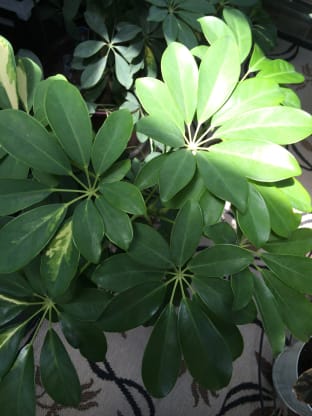In the late "80's NASA studied houseplants as a way to purify the air in the space station. Several plants were found to filter out common volatile organic compounds (VOCs). As a result, the study was tried on Earth with the same plants in different settings to help reduce harmful indoor air components and it worked! Since then, additional research has comforted NASA's scientific findings.
Asthma, bronchitis, and COPD are likely to be aggravated by many of the same VOC's to varying degrees. The pleasing atmosphere healthy green plants can create is an obvious benefit along with even lowing blood pressure and decreasing stress responses. Anytime you decrease stress on your body, you increase its ability to manage chronic illnesses.......another win-win. Please keep in mind that some of the following plants are considered toxic to babies and pets, so please keep out of their reach. If you have concerns the National Poison Control Center website is a helpful resource and you can call for advise as well, 800-222-1222.
*Bamboo palm: This small palm thrives in shady indoor areas. Can produce flowers and small berries. It tops the list for filtering out benzene & trichloroethylene.
*Chinese evergreen: An easy to care for plant that can help filter out a variety of air pollutants. Can produce red berries. Be careful with the berries!
*English ivy: If you have pets, especially ones that have accidents inside, you may want to add a pot of English ivy to your home. A recent study found that this plant reduces airborne fecal-matter particles. It has also been shown to filter out formaldehyde found in some household cleaning products.
*Golden pathos: This plant is mostly dark green, not golden. It is a powerful plant for tackling formaldehyde. It is a fast-growing vine that creates a cascade of green from a hanging basket. Consider locating it near a door closest to your garage since car exhaust is filled with formaldehyde.
*Peace Lily: Shade & weekly watering are all the peace lily needs to survive and product blooms. It tops NASA's list for removing all there of the most common VOC's-formaldehyde, benzene and trichloroethylene. It can also combat toluene & xylene.
*Snake plant: Also known as mother-in-law's tongue, this plant is one of the beast for filtering out formaldehyde, which is also common in cleaning products, toilet paper, tissues and personal care products. Put one in your bathroom, bedroom, office or classroom-it will thrive with low light while requiring little care.
*Spider plant: even if you tend to neglect houseplants, you'll have a hard time killing this resilient plant. With a rich foliage and tiny white flowers, the spider plants battles benzene, formaldehyde, carbon monoxide and xylene, a solvent used in leather, rubber and printing industries.
*Weeping fig: a ficus in your living rom can help filter out pollutants that typically accompany carpeting and furniture such as formaldehyde, benzene and trichloroethylene. Caring for a ficus can be tricky, but once you get the watering & light conditions right, they will last a long time.
Copies in part or whole from Paula Zamiatowski, Conservatory Interpretive Educator, Milwaukee County Dept. of Parks, Recreations & Culture. (The Domes) www.countryparks.com

